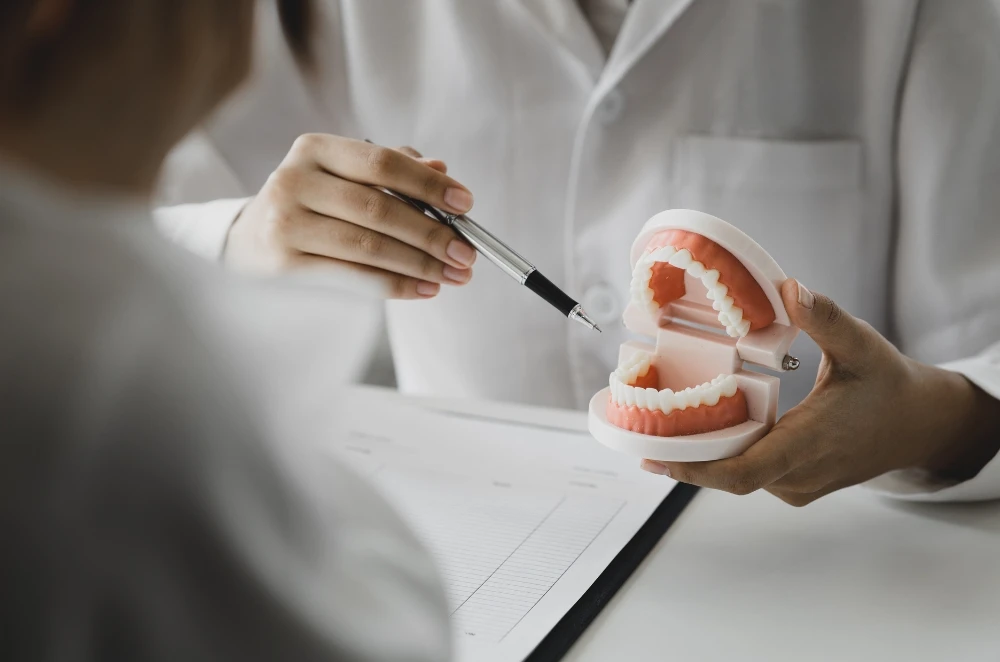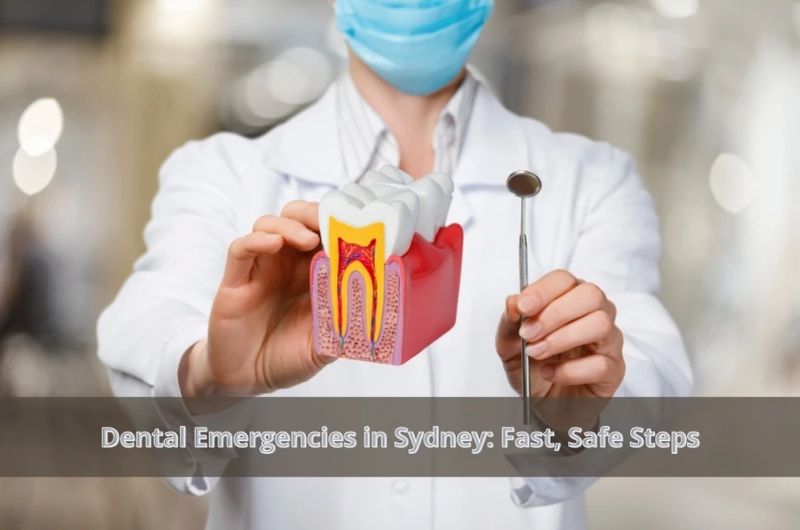When teeth suddenly hurt, crack, or get knocked, minutes matter. If you’re in pain now, call a dentist. For same-day relief, book emergency dental care Sydney trusts while you line up treatment — and use this guide to stabilise things before you’re seen.
Red flags? If you have facial swelling that’s spreading, fever, difficulty swallowing/breathing, or trauma with heavy bleeding, call a dentist or head to the nearest emergency department.
How to tell it’s a true emergency (and what to do first)
A dental “emergency” is any problem with severe pain, spreading swelling, uncontrolled bleeding, trauma, or a knocked-out tooth. Start here:
- Stay calm, clean the area: Rinse gently with lukewarm water.
- Control bleeding: Firm pressure with clean gauze/cloth for up to 10 minutes.
- Reduce swelling: Cold compress outside the cheek (10 minutes on, 10 off).
- Call a dentist: Describe symptoms and timing; ask for the earliest clinical slot.
- No aspirin on gums/teeth: It burns tissue and complicates treatment.
Quick story: I chipped a molar on an olive pit mid-meeting. Phoned the clinic, sent a photo, and they slotted me in the next hour. That early call saved me from an all-night throb.
What to say when you ring the dentist
Be brief, specific, and helpful:
- What happened and when: “Knocked out top front tooth at 3:10 pm; we have the tooth.”
- Symptoms: Pain score (0–10), swelling, fever, bad taste, bleeding level.
- Allergies/meds & pregnancy status (if relevant).
- Photos: If safe, text/email images of the tooth or injury.
Clinics triage quickly when they understand urgency. Mention if you can travel fast.
First aid by scenario: Do this now
1) Knocked-out adult tooth (avulsed)
- Handle the crown only (white part), not the root.
- If dirty, rinse briefly with milk or saline.
- Reimplant immediately if you can: gently push into the socket; bite on a cloth.
- Otherwise, store in cold milk (or saline). Not water.
- See a dentist within 30–60 minutes. Time is everything.
2) Severe toothache or facial swelling
- Rinse gently; floss to remove trapped debris.
- Cold compress; sleep with head elevated.
- Paracetamol and/or ibuprofen as per label (if suitable for you).
- Swelling + fever or trouble swallowing/breathing = urgent clinical care (or ED).
- For symptoms and red flags, see urgent care for a tooth abscess.
3) Broken or cracked tooth (no large fragment)
- Save fragments in milk.
- Cover sharp edges with sugar-free gum or orthodontic wax.
- Soft diet; avoid heat/cold extremes.
4) Chipped front tooth (cosmetic + sensitivity)
- Rinse; avoid biting hard foods on that tooth.
- Book prompt repair to prevent deeper cracks.
5) Lost filling or temporary crown
- Keep it clean; avoid sticky/chewy foods.
- Temporary filling material from a pharmacy helps short-term — treat as a stopgap.
- Arrange same-day/next-day care to prevent fractures or infection.
6) Bleeding after extraction (beyond a light ooze)
- Roll clean gauze (or a tea bag), place over the site, bite firmly for 10 minutes.
- No spitting, vigorous rinsing, or straws for 24 hours.
- If bleeding persists or you feel unwell, call the clinic or after-hours service.
7) Soft-tissue injuries (lip, cheek, tongue)
- Pressure for bleeding; cold compress outside.
- If the wound gapes or won’t stop bleeding, you need urgent care.
Pain relief: What helps and what makes it worse
- Do: Paracetamol and/or ibuprofen (if suitable), cold compress, head elevated, soft foods, and gentle saltwater rinses after 24 hours post-extraction.
- Avoid: Aspirin on the gum, heat packs on abscesses, alcohol as “disinfectant”, and DIY fixes that damage enamel.
- Topical gels: Brief numbing only — a bridge to clinical care, not a cure.
Reality check: Painkillers buy time; they don’t treat infection or cracked tooth structure. Book the appointment.
Kids, sport and schoolyards: Fast moves that matter
- Baby teeth: Don’t reimplant avulsed baby teeth — risk of harming the adult tooth germ. Call your dentist.
- Mouthguards: Custom guards prevent the classic front-tooth soccer injury. If a tooth pops out, milk + minutes count.
- Schools: Ask if they keep saline or UHT milk in the sick bay and know the “tooth in milk” rule.
After-hours and costs: Set expectations
- After-hours clinics often stabilise first (open a tooth, drain an infection, dress a fracture) and book definitive treatment later.
- Call before walking in — many practices keep urgent slots you won’t see online.
- Costs: Expect an emergency consultation fee plus any imaging and immediate procedures. Stabilisation first; complete tooth restoration after swelling settles.
If you’re comparing clinics, prioritise availability and clear emergency protocols over bargain pricing. A prompt drain or dressing can be the difference between relief tonight and a sleepless weekend.
Prevent the next emergency (boring but cheaper)
- 6-monthly check-ups and cleans: Fix small cracks and early decay before they become broken cusps.
- Night guards if you grind (telltales: morning jaw ache, flattened edges).
- Don’t chew ice or pen caps — easy wins for fewer chips.
- Fluoride toothpaste + nightly floss — the unglamorous duo that stops most problems.
I’ve watched tiny “watch and wait” cracks turn into Saturday-night emergencies. Prevention isn’t flashy, but it works.

Short-term fixes and deeper dives
For minor mishaps between appointments, see emergency tooth filling repair, practical measures that won’t make things worse.
Chipped enamel questions? Compare temporary fixes and long-term options with emergency chipped tooth repair.
Final word
Act early, stabilise smartly, and let a clinician take it from there. For bookings and same-day help, start with dental care emergency and keep the government’s guidance on urgent care for tooth abscess handy for red-flag symptoms. Quick, calm steps now save pain — and teeth — later.



